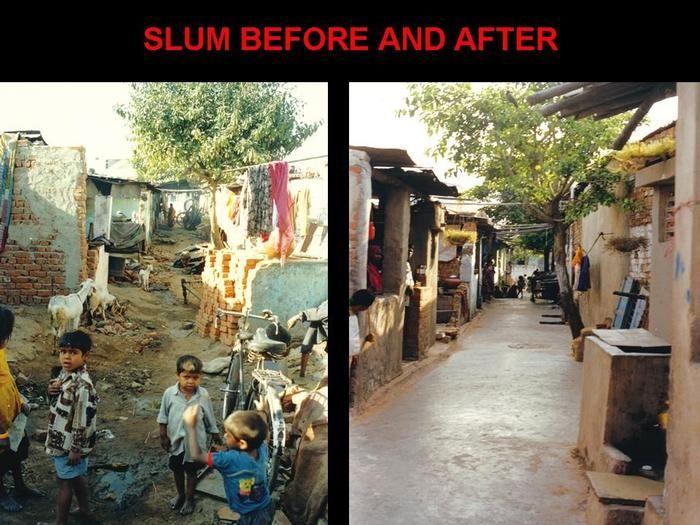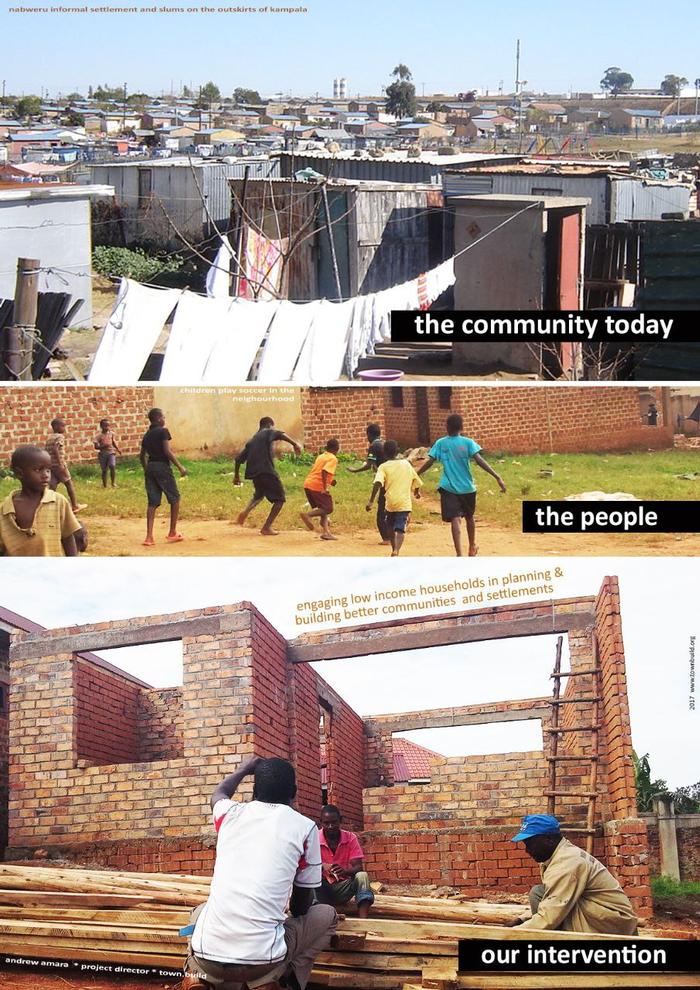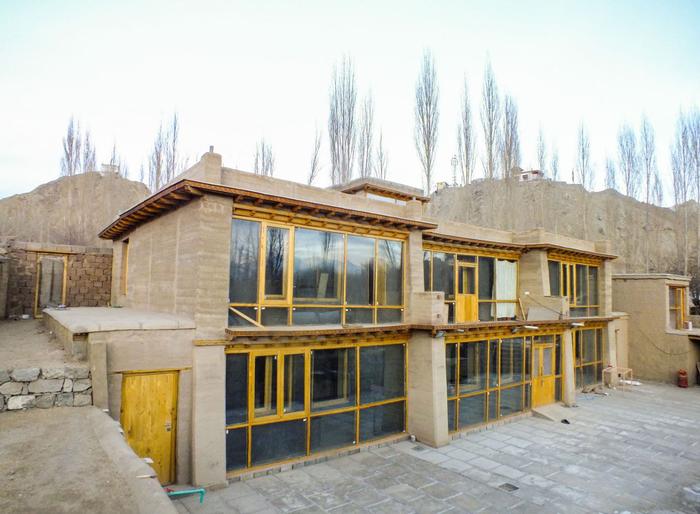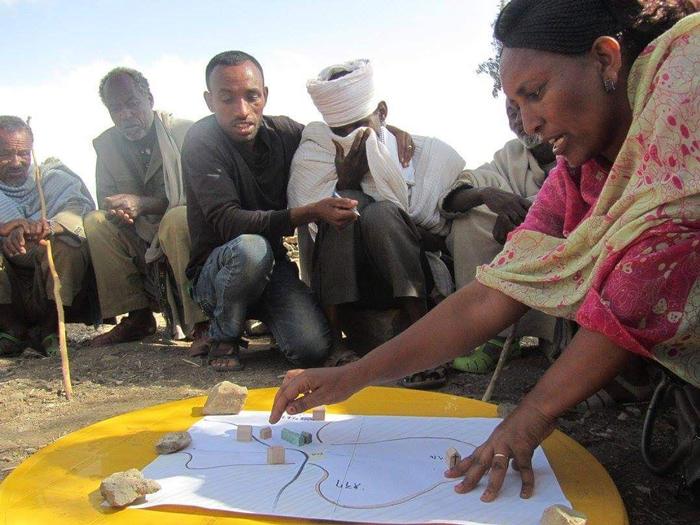Winta Assefa - EssayTo Stand Back and ObserveI was on the ground, guiding a discussion on a small village in Northern Ethiopia.
Our research trip organizers had invited the local community leaders of Al'asa to come together and talk about the future. But since I was the only one on the team who spoke the regional language, I had to moderate the debate alone. We had laid down the cloth map and placed small wood blocks all over the cloth to mark the location of the new buildings we were proposing. It'd taken some time to persuade the people in front of me to start talking: we could tell that it was the first time many of them had seen their entire village mapped out like that.
But within minutes, most of them started getting involved. Some of the men began talking over each other. A few of the women locked eye contact with me and explained their positions on the matter, and I moved the wood blocks on the map according to their suggestions. Then, when the discussion started getting too loud for anybody to focus, people began coming forward to move the woodblocks themselves. That triggered even louder reactions, and more people leaned in to undo the changes they didn't like. We had little control left: the people had taken ownership over the conversation about their village's future.
My only job then was to remind them of geographical constraints, future considerations they had to make, and the concerns that different parties within the group had raised. Even though we had to wrap up shortly after the staff-yielding villager gave an impassioned speech on his people's bravery and autonomy, we'd managed to record a lot of ideas already.
It was like Alejandro Aravena once said: participatory design is not a hippie, romantic, let's-all-dream-together-about-the-future-of-the-city kind of thing [i]. It really isn't. No matter the designers' intentions and delivery, the participants could end up feeling fearful, defensive, and angry. I believe that all of those feelings are valid: we were the ones who had come to their birthplace-their homeland-and started talking about change.
The trip I went on had been part of a nationwide study called T2D (Tukul to Dachas), which consisted of ten 'prototype' towns from different parts of the country. It all came to a halt when one of our project founders went missing. He traveled to the Southern part of the country and never came back. There was nothing we could do about any of it. It's an incident that shook us in ways little else had done before. Although we never got to see the project through because of the tragic way things had ended, the participatory design process in Al'asa taught me how to listen to large groups of people at once and encourage them to listen to each other too.
But not all of our discussions with the community members were planned. I remember many children interrogating us as we roamed around the village to gather site research. I tried to answer most of the questions they asked. I told them that we were just student researchers who had come to find out what they thought of the urban plan other researchers had devised. But they hadn't warmed up to the idea of major changes happening there. The locals wanted immediate solutions to individual problems like the lack of water, electricity, or infrastructure services. At one point, I stopped walking and asked them to come to a consensus: what was the single most urgent problem that faced most of them? Several answers were yelled back at us. Then, most of the group members looked at each other and uttered what they agreed on: they needed their water pump to work. Most nodded at this statement. Several of them said nothing though. I had wondered whether they silently agreed with the majority or not.
Right then, I was tempted to go back to my university and ask them to only focus on that one thing: water infrastructure. The whole masterplan-which would include the water infrastructure-may take many more years. This could lead to a tough wait in a dry land with just a couple of sources of running water. But I didn't know whether the new urban plan would incorporate the sort of water pump they used. So, even if we fix the pump, it may have to be removed later to put a more developed water infrastructure system in place. In this case, investing in a short-term solution could be counterproductive because it would take away from the primary plan's already limited resources. But how can we implement a long-term plan without prolonging these people's suffering?
This dilemma reminded me of what the people at Elemental and the teams who worked with them faced when a devastating earthquake struck Constitución in 2010 [ii]. Since the earthquake and subsequent tsunami essentially destroyed the city, rebuilding had to happen as quickly as possible. So, everyone involved in the reconstruction project gave themselves only a hundred days to redesign the whole city. That's a long time for anyone facing an emergency, and the locals had envisioned their hometowns in many different ways. The participatory design process was reportedly intense and full of accusations. But the teams who worked on the reconstruction project listened to the people's concerns and dug deeper. They wanted to find out what else was bothering them.
The residents acknowledged that it was good to protect the city against future tsunamis, even though they don't get those very often. But they endured flooding every year, and their public spaces were scarce. Through such discussions, they were able to develop a holistic solution: a forest that would absorb floodwater and serve as a park.
Those who worked on that reconstruction project showed that short-term solutions and long-term changes did not have to be dealt with separately: it was by implementing those short-term action plans that people were able to work together and learn to take on more complex challenges as a community.
But I don't know when the next time I or anyone in the design field could go back to Al'asa to continue such discussions. At the moment, that region's condition is grim, and it's not because of a natural disaster.
A war had erupted there toward the end of 2020. The northern part of Ethiopia experienced a total blackout: no electricity, internet, or phone calls. It was like an entire segment of the country was amputated overnight. I wonder how the staff-wielding villager and his fellow community leaders are doing.
How can anyone project into the future within such an unstable political landscape?
Following the war in Northern Ethiopia and the international events of 2020 that disrupted construction everywhere, I couldn't help but feel like our profession may be a disposable one during emergencies. If something like a global pandemic can halt most large-scale plans, what do we have to offer in times like these? Where does that put us? Could better listening, more sensitive designs, or participatory design projects have prevented any of these disasters? Even after five and a half years in EiABC, I only came out more aware of how much I don't know. Was that the whole point of this education?
I requested a conversation with my institute's co-founder and my thesis advisor Zegeye Cherenet to have some of my questions answered. I wanted to know: what frequency do I tune my ear to now? How can I pay attention to the complex societal body while also, in Peter Trier's words, '[looking] at the unique attributes and situation of each person as sensitively as [I] can, and [trying] to encourage the development of that?' [iii]
We concluded that the answer must begin in how the university teaches architecture.
Although our teachers had us to parts of town that the city administration, investors, and residents seemed to have given up on, it was usually a one-way route for us. We never go back to the places we drew our research from to let them know how we translated their needs into designs. But unlike Raymond Lifchez's students, visiting outsiders never came to our studios and challenged our designs either.
'Let's break down the wall,' Zegeye reportedly said when he first became EiABC's scientific director in 2009. He was right: Architecture can't just be taught inside the campus, fenced off from the rest of reality. There has to be some osmosis between the two sides. We never got rid of those walls though. And our shortcomings especially came to light when members of the Disability Development Initiative gave us an Accessibility Seminar Program in October 2019. They toured the campus in their wheelchairs and were dissatisfied with the level of accessibility in EiABC. They informed us that we were the ones who set the bar for other building institutions all over the country: if our university is not designed to be accessible by everyone, what more can we expect from the built environment outside our university walls? We need more of those visits to be integrated with our educational programs and not just serve as one-off events. For the spaces we design to be inclusive, we must keep learning how different people access the built environment we share during our design process.
But while focusing on those life-altering details, we were trained to keep an eye out for the societal forces on a larger scale too. Through our site visits, we had seen that the people in the places we visited were rich in something that wasn't obvious at first sight. Members of those communities had skills like designing prints, carpentry, and pottery. Some of those skills could be utilized in the building process and to drive the local economy. So, in our housing class project, we proposed that the former wood workshop employees in our study area receive additional training to make bamboo plastic panels for the houses we designed.
Overall, we were happy with our final results. But I wonder how many more of those skills we could have integrated into our designs if we had more of a back-and-forth with the people we were designing for.
To me, the most valuable thing we took out of our militaristic campus wasn't the ability to draw detailed plans or make pretty sketches that glorify the makers: it's to develop a keen eye, receptive ear, and vivid imagination. The level of attention we have at the beginning of our design processes must go on throughout our education though. We can't afford to digress or ignore the places we studied. We must ask what we can improve and have the humility to drop whatever doesn't work. Through this service-oriented mindset and the shedding of our ego, we can grow and mature into more sensitive architects.
After all, anybody's pride would be too expensive to accommodate here. There is no place for that within the local environment, culture, or history. What there is a significant shortage of is sensitivity and innovation. And that gap is where we're slowly being trained to plug ourselves into.
Still, our job does not end at observing our landscape though. We have to translate the critical issues we identify into physical solutions. It seems like our job comes in two parts: we first read reality, then we form and inform it based on all of the different layers of information we absorb.
In a nation with years of civil war and isolationist agricultural societies, standing back and listening takes on a whole new level of importance. So many people had been silenced for too long. We may have to let people share their pain, disappointments, insecurities, and hopes. The whole process could feel like generational therapy. But I learned that I must be as pragmatic as I am optimistic in my approach. Just as we did in Al'asa, we architects must bring different people together and moderate discussions about the form our urban landscapes would take. Every category of people should be represented in such meetings. Otherwise, the frustration and disillusionment could keep bubbling up within this society, and we may risk history repeating itself. There's so much work to do. But once we've made a successful diagnosis, the best way we can move forward is, as Nathan Koren had written, '[by] aligning financial, political, and institutional interests.'
There are several international examples of projects that had been conceived and built with communities' participation. From what the team at Elemental had shared about the housing project in Iquique, it seems like people are better off taking as much of the building process as possible into their own hands [iv]. A collaborative design process had also been used to identify key problems and design solutions in a Cambodian rural community with physically challenged people [v]. So, it's safe to assume that a similar approach could work here too, whether on the village level-like I experienced in Al'asa-or on the city level-as was documented in Constitución.
Currently, Ethiopia has a young population, many experienced traditional builders, and an environmentally conscious general public who reportedly broke the international tree-planting world record in 2019. I believe that as architects, we must pay attention to these trends and age-old forces, and somehow bring them together to create something new. And while it is a scary time to visualize the future here, the sentiments online and on the streets show that people are looking forward to some sort of Ethiopian Renaissance.
In university, our professors taught us to look at the future and plan despite what seems to lie ahead, not because of it. In Zegeye's words, 'architecture is what reminds you of the question: what is beauty? What is truth? And that engagement-individually and communally-would give people a chance to help them confront the question in search of meaning. And it's that search for meaning, beauty, and truth that sets the human-animal apart from other animals.'
Works cited and works consulted:
[i] Aravena, A., 2014. My architectural philosophy? Bring the community into the process, Available at: https://www.ted.com/talks/alejandro_aravena_my_architectural_philosophy_bring_the_community_into_the_process/up-next
[ii] Boano, C. and Garcia, M., 2013. Lost in Translation? The Challenges of an Equitable Post-Disaster Reconstruction Process: Lessons from Chile. Beyond Shelter after Disaster: Practice, Process and Possibilities, pp.75-91.
[iii] Fior, M. 2017. A House for Someone Unlike Me, dir. Bruce Bassett (Adaptive Environments Center, 1984), Available at: https://www.youtube.com/watch?v=IKk0_cI0v4o; 36:12
[iv] Halloran, V., 2020. Solving the Housing Crisis Half-a-House at a Time: Incremental Housing as a Means to Fulfilling the Human Right to Housing. University of Miami Inter-American Law Review, 52(1)
[v] Drain, A., Shekar, A. and Grigg, N., 2018. Participatory design with people with disability in rural Cambodia: The creativity challenge. The Design Journal, 21(5), pp.685-706
Special thanks to the people of Al’asa for their generosity and warmth.
Additional Help and InformationAre you in need of assistance? Please email info@berkeleyprize.org. |




